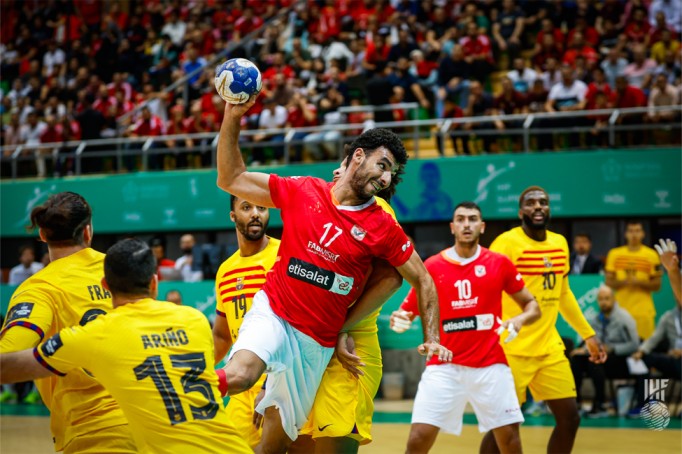Handball is a sport in which two teams compete for control of an inflated ball, using their hands to control it and throw it into the opponent’s goal, which is equivalent to scoring a goal. It is played both outdoors and indoors, and each team is made up of around seven people. (Each squad consists of six field players and a goalkeeper). The main goal of the game is to throw as many balls as possible into the opponent’s goal. Unlike football, the ball is played with hands. Every match consists of two 30-minute halves separated by a 15-minute intermission.
This sport is widely practiced in Europe, with a rather minority presence in the rest of the world, except some American countries such as Brazil and Argentina, African countries such as Algeria, Egypt, Tunisia, and the only other Asian country except South Korea. There are both women’s and men’s professional leagues in these countries, as well as national, regional, and even world competitions organized by the International Handball Federation (IHF), based in Basel, Switzerland.

History of Handball:
Denmark is considered to be the birthplace of handball, although references to ancient games with the ball in hands are found in Homer’s Odyssey and the works of the ancient Roman physician Galen.
The date of origin of the sports game with a ball, registered in the international sports classification under the name “handball” (handball), is considered to be 1898, when the teacher of physical education at the real school of the Danish city of Ordrup, Holger Nielsen, introduced a ball game called “handball” in which teams of 7 people competed on a small field, passing the ball to each other and trying to throw it into the goal.
Rules of Handball:
- A handball team consists of sixteen players, seven of whom can be on the court at once; the remaining players are substitutes.
- A fifteen-minute interval separates each of the two thirty-minute halves of an adult team match.
- The ball is thrown into the field’s center to start the match. Players can safely touch the ball with any part of their body except their feet. You have to wait till the player is more than three meters away before passing.
- Before making a pass or throwing the ball into the opponent’s goal, each player has the right to hold it only for three seconds. At the same time, you can take no more than 3 steps with the ball in your hands, then you have to throw it to someone else.
- The goal area is only accessible to the goalkeeper. A field player is considered to have entered the goal area, which includes the goal area line if he touches it with any part of his body. However, this is not penalized if a player enters the goal area after passing the ball and this does not lead to a loss of advantage for the opponent, or if a player from one of the teams enters the goal area without the ball and does not gain an advantage from it.
- A replacement team member may enter the field only after the handball player replacing him has left the court.
- It is referred to as passive play when the ball is not moved quickly from the defensive to the offensive zones. A free throw from the spot where the ball was when play was paused was given to the opposing side as a penalty.

Penalties in Handball:
The rules provide for three types of personal punishments:
- Warning.
- Remove for 2 minutes.
- Disqualification (removal until the end of the game).
These penalties can be imposed on both players and team officials.
Player role in Handball:
There are the following player positions in handball:
- Goalkeeper;
- Extremes. They play on the flanks.
- Point guard. Plays in the centre of the field, often serving as a point guard. Passing ability and field vision are important to him.
- Welterweight. Play between the corners and the center.
- Linear. Plays on the 6-metre line. His task is to interfere with the enemy’s defense and fight for balls hit by the opposing goalkeeper.
Duration and Result:
A typical handball game lasts about an hour, divided into two periods of thirty minutes each. For youth teams, this period can be shortened to 25 or 20 minutes per period. Between one period and another, there is a mandatory 10-minute rest period.
At the end of this time, whoever has scored the most goals will be the winner. In the event of a tie, 5 more minutes of rest will be granted, and then an extra time of two halves of 5 minutes each will be played, with one minute of rest between the two. If the tie continues, the procedure will be repeated. If there is no decisive result yet, the winning team will be determined through five successive throws of seven meters (7 m) per team until a winner is found.
Conclusion:
Handball is an ancient game with the ball in the hands, as found in Homer’s Odyssey and the works of the ancient Roman physician Galen. It is a sport in which two teams compete for control of an inflated ball, using their hands to control it and throw it into the opponent’s goal, which is equivalent to scoring a goal. The game duration is divided into two periods of thirty minutes each, and at the end of this time, the teams that scored the most goals will be announced as the winners.


